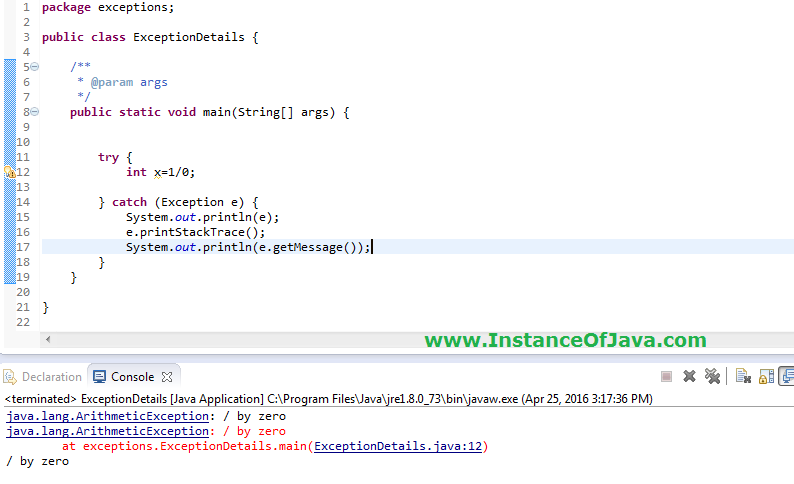


- #Creating a own exception in subclasses in java in hindi software
- #Creating a own exception in subclasses in java in hindi code
Of course, Limousine and RaceCar still have their unique attributes and functions. This is where the inheritance technique saves time: Create one generic class (Car), and then define the subclasses (RaceCar and Limousine) that are to inherit the generic class’s traits. In fact, each object is just a different kind of Car. Everyone builds their objects separately but discover commonalities between them. Suppose that in addition to your Car object, one colleague needs a RaceCar object, and another needs a Limousine object. Also, this modularity allows an IT team to work on multiple objects simultaneously while minimizing the chance that one person might duplicate someone else’s functionality. Objects are self-contained, and each bit of functionality does its own thing while leaving the other bits alone. “Oh, the car object broke down? The problem must be in the Car class!” You don’t have to go line-by-line through all your code. When working with object-oriented programming languages, you know exactly where to look when something goes wrong. Here’s a look at some of OOP’s top benefits: 1. The advantages of object-oriented programming lie in this kind of encapsulation. If you then want your program to create a customer in memory, you create a new object of the Customer class. So, for example, you can declare a Customer class, which holds data and functions related to customers. When you want to create something in memory, you create an object, which is an instance of that class. A class contains both data and functions. With OOP, instead of writing a program, you create classes. Come to grips with OOP, however, and you’ll see that it offers a whole new way of solving problems.
#Creating a own exception in subclasses in java in hindi code
Or you may have experience with functional programming, which treats elements of code as precise mathematical functions, and prevents them from affecting other elements - that is, no side effects. You may be used to breaking down large problems into sub-problems and solving them in separate units of code. That said, many developers start off with top-down languages like Visual Basic or JavaScript. The same goes for web development, given the popularity of OOP languages like Python, PHP and Ruby.
#Creating a own exception in subclasses in java in hindi software
Thanks to the widespread use of languages like Java and C++, you can’t develop software for mobile unless you understand the object-oriented approach. These days, most major software development is performed using OOP. However, when objected-oriented programming, or OOP, first appeared in the 1980s, it was a radical leap forward from the traditional top-down method. Object-oriented programming is such a fundamental part of software development that it’s hard to remember a time when people used any other approach.


 0 kommentar(er)
0 kommentar(er)
